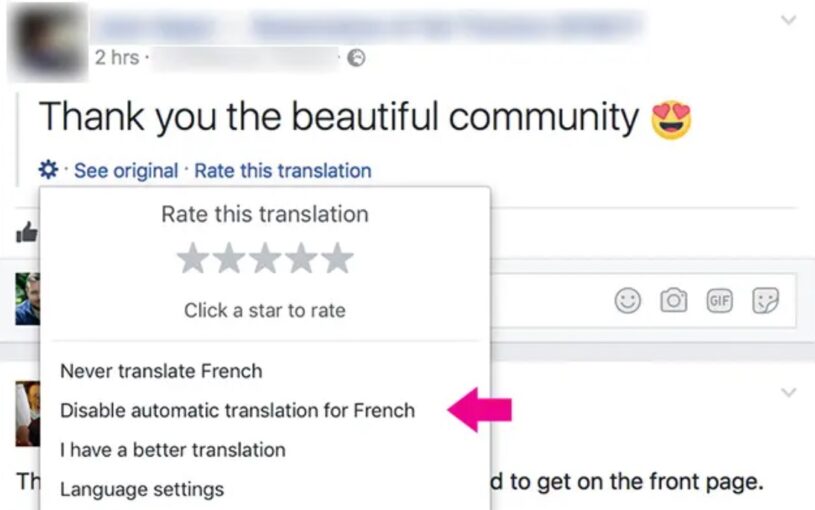After Google integrated the “translate” feature into its social network, which allows users to translate posts and comments into 50 different languages, Facebook, as usual has followed the footprints of Google+, and quietly announced the launch of “translate” button – powered by Microsoft’s Bing.
The new in-line translation feature allows users to quickly translate content or comments on pages using Bing Translate. Prior to the launch of this feature, most users on Facebook relied on third-party services like Google Translate to help them understand and communicate with users who speak other launches. The translate feature on Facebook will now eliminate the pain to go to Google Translate, and users will be able to translate a comment or page by simply clicking the translate button, which is placed next to the ever-popular “Like” button.

When a user translates comments by clicking the “Translate” button, an “Original” button appears in place of the Translate button, which allows users to switch back to the original language.
However, it is still unclear as to how many languages the translator supports. So far, it is known that it supports English, Spanish, French, Hebrew and Chinese language. And the button only appears for users with their language set to English, Korean, Japanese, Russian, Taiwanese and Chinese-Hong Kong.
How to Activate Translate on Facebook

1. Click on Account on the top right hand side of your page and select Use Facebook as a Page.
2. Click on Edit Page on the top right hand side of your page.
3. Click on Your Settings on the left side of the page. You’ll have four choices to pick from:
- Admin, community, and machine translators
- Community and machine translators (default)
- Machine translators
- None

However, at times the translator displays an error message – “There is no translation available for this story at the moment, whenever a language is not supported. As Facebook mentioned, users will have the opportunity to add their own translation for a post or comment by opting-in to using in-line translation. Once the user has provided the translation and if the translation receives enough positive votes from other users, then the translator will replace it with the Bing translation and the same will appear each time someone clicks the Translate button for that specific post.
